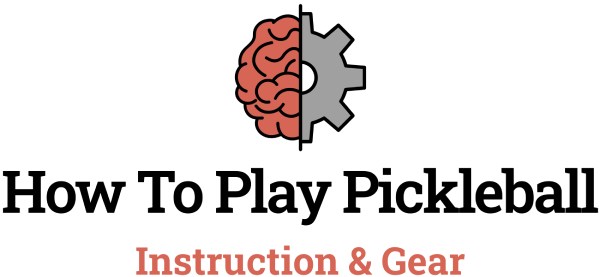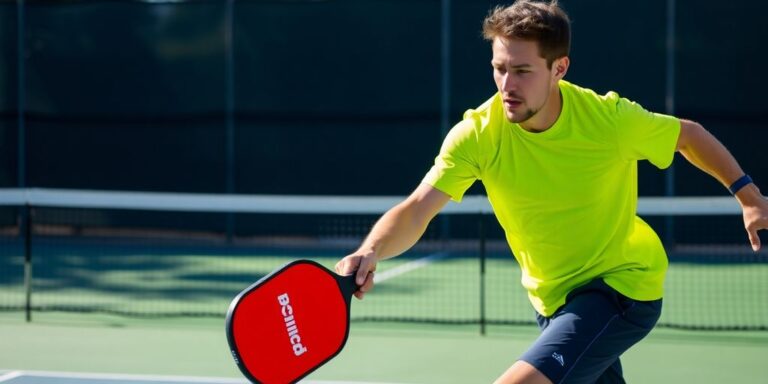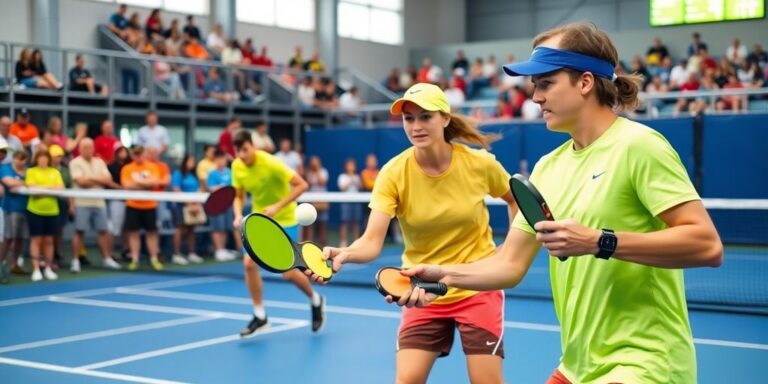Pickleball is becoming increasingly popular, and understanding the dimensions of a pickleball court is key for both players and builders. These dimensions not only dictate how the game is played but also how courts are constructed and maintained. Whether you’re looking to play casually in your backyard or build a court for your community, knowing the specifications will help ensure an enjoyable experience for everyone involved.
Key Takeaways
- A standard pickleball court measures 20 feet wide by 44 feet long, similar to a badminton court.
- When compared to a tennis court, a pickleball court is much smaller, allowing for multiple courts to fit in the same space.
- For multi-use facilities, it’s important to adjust markings and net height to accommodate both tennis and pickleball.
- Choosing the right surface material is crucial for gameplay, with options ranging from concrete to specialized sports surfaces.
- Proper court layout and clear markings are essential for fair play, especially regarding service areas and the non-volley zone.
Essential Pickleball Court Specifications

Standard Dimensions Of A Pickleball Court
Okay, so you want to know about pickleball court sizes? The standard pickleball court is 20 feet wide and 44 feet long. This is the same for both singles and doubles, which is pretty cool. But remember, that’s just the court itself. You also need extra space around it so you don’t end up tripping over stuff when you’re chasing after the ball.
Ideally, you want a total play area of about 30 feet by 60 feet. If you’re serious, go for 40 feet by 64 feet. Think of it as your safety zone. You can find more information about pickleball rules online.
Pickleball Court Size vs Tennis Court Size
So, how does a pickleball court stack up against a tennis court? Well, it’s way smaller. A pickleball court is less than half the size of a standard tennis court. This is why you can sometimes squeeze in multiple pickleball courts onto a single tennis court. People often use tape to mark the lines. You can fit up to four pickleball courts on one tennis court. This makes it easy to set up temporary pickleball setups on existing tennis courts.
Adjustments for Multi-Use Courts
Got a tennis court you want to share with pickleball players? No problem! You’ll need to paint some extra lines and make sure the net height is right. The net should be 36 inches high at the sidelines and 34 inches in the middle. A center strap helps with this. You can mark the baseline to create the kitchen and service areas. This way, everyone can enjoy the space. It’s all about playing pickleball together!
When planning your court, think about the sun. Ideally, the court should run north to south. This way, the sun won’t be in players’ eyes. If you have trees, that can also help with shade. Fencing between courts is also a good idea. It keeps balls from rolling onto other courts and adds a bit of safety.
Construction and Surface Options for Pickleball Courts
For those looking to get into pickleball, there are several choices when it comes to how the court is built and what it’s made of. It’s not just about slapping down some lines; the surface and construction play a big role in the game’s quality and how long the court lasts.
Popular Court Surface Materials
When it comes to pickleball courts, you’ve got a few solid options for the surface. Concrete is a popular choice because it’s durable and gives a consistent bounce. But you can also go with asphalt, cushioned acrylic, or even modular tiles. Each material has its pros and cons, so it really depends on what you’re looking for in terms of playability, maintenance, and cost. The surface material you pick can really change the game.
Ensuring the Correct Net Tension and Position
Getting the net right is super important. If the net’s too loose or too high, it can mess with the game. You want to make sure the net is at the right height (36 inches at the sidelines and 34 inches in the middle) and that it’s nice and taut. A center strap is key for keeping the middle at the right height. A properly set up net makes for fair play and a better experience for everyone.
Choosing the Right Court Location
Where you put your pickleball court matters a lot. You’ll want a spot that’s flat, away from trees (falling leaves are annoying), and ideally oriented so the sun isn’t always in your eyes. Think about drainage too – you don’t want a court that turns into a pond after it rains. Also, consider noise; maybe don’t build it right next to your neighbor’s bedroom window. Picking the right spot can save you headaches down the road. Don’t forget to consider the pickleball line tape you’ll use to mark the court.
Building a pickleball court is more than just drawing lines on the ground. It’s about creating a space where people can have fun and get some exercise. Think about the long-term use, the environment, and how it will fit into your community. A little planning goes a long way in making sure your court is a hit for years to come.
Practical Insights for Potential Court Owners

Potential court owners have a lot to think about! Building a pickleball facility isn’t just about slapping down some lines and a net. Location, materials, and ongoing upkeep all play a big role in how much enjoyment you and others get out of the court.
Estimating the Cost of Building a Pickleball Court
Okay, let’s talk money. The cost of a pickleball court? It’s all over the place. You’ve got to factor in the surface, the net, labor, and any extras like fencing or lighting. The surface material is a big cost driver. Here’s a rough idea of what you might be looking at:
| Item | Estimated Cost |
|---|---|
| Surface | $3,000 – $8,000 |
| Net System | $200 – $500 |
| Labor | $1,000 – $5,000 |
| Fencing (Optional) | $2,000 – $10,000+ |
Keep in mind these are just estimates. Getting quotes from local contractors is a must. Also, don’t forget to budget for things like permits and site preparation.
Selecting Appropriate Equipment
Beyond the court itself, you’ll need the right gear. This means paddles, balls, and maybe even a ball machine if you’re serious about training. Here’s a quick rundown:
- Paddles: Prices range from $30 to $200+. Consider the weight, grip, and material. Try out a few different ones if you can.
- Balls: Outdoor balls are heavier and more durable than indoor ones. Get a few to start.
- Net: If you’re not building a permanent court, a portable net is a good option. Make sure it meets regulation height.
Don’t skimp on quality, especially when it comes to paddles. A good paddle can make a big difference in your game and will last longer.
Understanding Maintenance Requirements
Once your court is built, the work isn’t over. Regular maintenance is key to keeping it in good shape. This includes:
- Cleaning: Sweep or wash the surface regularly to remove dirt and debris.
- Crack Repair: Address any cracks promptly to prevent them from getting worse.
- Net Maintenance: Check the net tension and replace it if it’s sagging or damaged.
Depending on the surface you choose, you may also need to resurface it every few years. Proper maintenance will extend the life of your local pickleball courts and keep them safe and enjoyable to play on.
Tailoring Pickleball Courts for Different Formats
Pickleball is cool because you can tweak the game to fit all sorts of players and situations. Whether it’s a serious match or just messing around with family, there’s room to adjust. Let’s look at how you can change things up.
The Court’s Versatility: Singles and Doubles Games
Pickleball courts are awesome because they work for both singles and doubles. The court size stays the same, but how you play changes a lot. In singles, it’s all about covering the court and smart shots. Doubles is more about teamwork and quick moves with your partner. It’s great that one court can handle both, making the game accessible to more people. You can really see the court’s versatility when you switch between the two.
Adjustments in Gameplay Space
Even though the court size is set, you can still make some changes to how you play based on skill level or who’s playing. For example:
- Shorter Games: Play to 7 or 10 points instead of 11 for quicker matches.
- Modified Serving Rules: Let beginners have two serves instead of one.
- Smaller Court Area: Use cones to mark a smaller playing area for young kids.
Making these little tweaks can help keep the game fun and fair for everyone, no matter their skill. It’s all about adapting to who’s on the court.
Creating a Family-Friendly Environment
Pickleball is a sport that can be enjoyed by people of all ages and skill levels. Here are some ways to make it more family-friendly:
- Use Lighter Paddles and Balls: This makes it easier for kids to hit the ball and reduces the risk of injury.
- Set Up Multiple Courts: If you have the space, set up a smaller court specifically for kids. This allows them to play at their own pace and skill level.
- Focus on Fun, Not Competition: Emphasize the social aspect of the game and encourage players to support each other. Make sure everyone understands the singles format if they want to play one-on-one.
Here’s a simple table showing how you might adjust the game for different age groups:
| Age Group | Paddle Weight | Ball Type | Court Size | Scoring | Focus |
|---|---|---|---|---|---|
| Kids (6-10) | Lightweight | Soft | Smaller | Modified | Fun & Skills |
| Teens (11-17) | Standard | Standard | Standard | Standard | Skill & Strategy |
| Adults (18+) | Standard | Standard | Standard | Standard | Competition & Social |
By making a few simple changes, you can create a pickleball environment that is fun and inclusive for the whole family. Remember to always check the essential rules of pickleball before starting a game.
Court Layout and Marking Details
Pickleball Court Lines and Their Significance
Okay, so you’re ready to get serious about pickleball. That means understanding the lines. The lines on a pickleball court aren’t just decorations; they dictate the rules of engagement. Think of them as the boundaries of your battlefield. You’ve got your baseline, sidelines, and the non-volley line (kitchen line). Each one plays a vital role in how the game unfolds. For official matches, those lines need to be 2 inches wide so everyone can see them clearly. Temporary lines are okay for casual games, but if you want to play by the book, get the measurements right. You can even use the front service line on a Badminton court as the Kitchen line, but it’s a few inches closer to the net than it should be.
Understanding the Non-Volley Zone
The non-volley zone, or "kitchen," is a unique feature of pickleball. It’s the area within 7 feet of the net on both sides. You can’t volley the ball while standing in the kitchen. You can enter the kitchen to hit a ball that has bounced, and you can stay there after hitting the ball. It adds a layer of strategy to the game, forcing players to think about their positioning and shot selection. It’s what makes pickleball, well, pickleball. Understanding the non-volley zone is key to mastering the game.
Importance of Clear Markings for Fair Play
Clear markings are super important. I mean, really important. They’re not just about aesthetics; they’re about fair play. If the lines are faded or inaccurate, it leads to arguments and frustration. Nobody wants that. Accurate lines help players make split-second decisions, and they help referees make the right calls. Think of it this way: clear lines equal a smooth, enjoyable game for everyone. If you’re setting up a court, take the time to mark the correct court dimensions properly. It’s worth the effort.
Having clear boundaries is essential for pickleball. They provide visual cues for players to make split-second decisions during gameplay. They help to quickly determine if a ball is in or out, reducing disputes and maintaining the flow of the game. Accurately marked lines also assist referees and line judges in making fair calls, which is crucial during competitive play.
Here’s a quick rundown of why clear markings matter:
- Reduce arguments
- Ensure fair play
- Help players make quick decisions
- Assist referees in making accurate calls
Understanding the layout and markings of a court is essential for any player or fan. It helps everyone know where to stand and how to play the game correctly. If you want to learn more about court designs and get tips on how to improve your game, visit our website today!
Wrapping Up: Key Takeaways on Pickleball Court Dimensions
So, there you have it! Understanding the dimensions of a pickleball court is pretty straightforward, but it’s super important for both players and builders. Whether you’re looking to play a casual game or set up a professional court, knowing the right measurements can make all the difference. Remember, a standard court is 20 feet wide and 44 feet long, but don’t forget about the extra space around it for safety and movement. If you’re building one, think about the surface and layout too. With the right setup, you’ll be ready to enjoy this fun sport to the fullest!
Frequently Asked Questions
What are the official dimensions of a pickleball court?
A regulation pickleball court is 20 feet wide and 44 feet long, which is the same size as a badminton court.
Can I play pickleball on a tennis court?
Yes, a tennis court can be adapted for pickleball. You can use tape or chalk to mark the lines, allowing for up to four pickleball courts on a single tennis court.
What is the recommended space around a pickleball court?
It is recommended to have a minimum play area of 30 feet by 60 feet around the court, with an ideal space of 40 feet by 64 feet for comfortable play.
What materials are best for building a pickleball court?
Popular materials for pickleball court surfaces include asphalt, concrete, and specialized sports tiles, which provide a flat and consistent playing area.
How high should the net be on a pickleball court?
The net should be 36 inches high at the sidelines and 34 inches high in the center to ensure fair play.
What should I consider when maintaining a pickleball court?
Regular maintenance includes checking the court surface for cracks, keeping the lines clear, and ensuring the net is properly tensioned and positioned.




